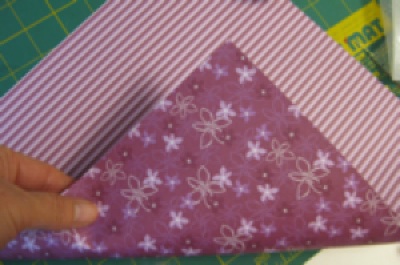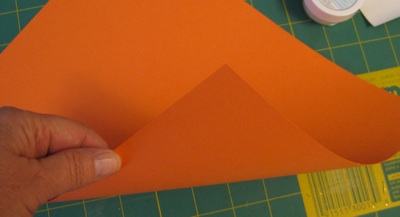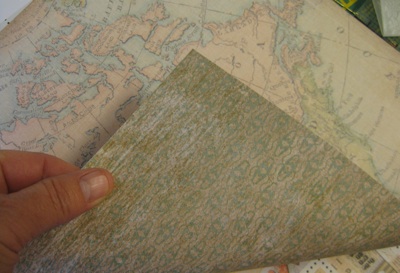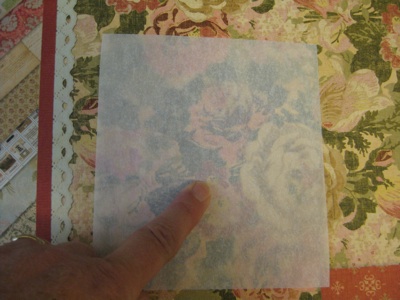| Acid and Lignin Free | Single Sided Paper | Text Weight, Double Sided, Paper | Colored Card Stock | Textured Card Stock | Double Sided, Heavy Weight, Paper | Vellum | Mulberry Paper | Save Your Scraps |
Paper for Card Making and Scrapbook Layouts
Card making and scrapbook pages are created using the same papers. There are names for the different types of paper available in stores or online. Card stock, textured card stock, text weight, designer series, heavy weight double sided, vellum, mulberry, white core, and solid core. I will take you through each type of paper and show you examples as we go along.
Acid and Lignin Free

There is only ONE solid rule in choosing papers especially for scrapbooks. It is ALWAYS Acid Free and Lignin Free. How do you know when a paper is designated as Acid Free and Lignin Free?
If you are looking online for paper, make sure the seller tells you their papers are acid free and lignin free. When in a store look for the mention of it somewhere, usually on the front of the paper pack. Most craft/hobby stores that sell individual sheets of paper will have a notice on the back of the paper or on the pricing sticker attached to the sheet. Make sure to look at all the papers, even in a "Scrapbook Store" that sells products strictly for scrapbooks.
I can not express this strongly enough. Make sure the papers you choose for your precious photos are protected by the use of acid free and lignin free paper. If you think that going the cheaper route by purchasing colored construction paper will serve you better you will find your photos discoloring and becoming brittle over time. Papers that are not acid free and lignin free emit a gas that is highly destructive to photos.
You can purchase a treatment for papers, such as newspaper articles, magazine articles or pictures, and other things that are not photo safe. This product comes in a can. It is not only costly, it has a limited amount of product to use. You could very well spend up to $15 to protect the work you have already done only to learn that for mere pennies this step could be eliminated all together. Don't go cheap when it comes to your precious memories.
Now that you know to look for Acid Free and Lignin Free papers, lets get on to the different types of paper you will be using in your scrapbooks and cards.
Single Sided Paper

Single sided paper will come in a rainbow of colors, prints, and print sizes. Every occasion you can think of has a paper design and color scheme. Print sizes range from large to very small. Birthday cakes, party hats, Halloween images, Christmas trees, ornaments, snowflakes, snowmen, weddings, sports of all kinds from soccer to football, school papers for kindergarden to high school, and so much more.
As the name implies, single sided design paper has images on the front only. The back is plain white. This is also known as white core paper. If you tear it you will see the torn edges to be white. This is a very light weight paper known as "Text Weight". A bit heavier than copy paper. This paper is used as an accent on a scrapbook layout, matte background, or a card front. Since it is so light weight and insubstantial it does not hold up well in supporting photos and embellishments. Using this paper as a card base will result in a "Flop", literally. The paper will just flop over from its own weight.
Text Weight, Double Sided, Paper

Text weight, double sided, paper is often referred to as "Double Sided Designer Paper" or "Designer Series Paper". This is a light weight paper, heavier than copy paper, with a print on both sides. You can get dual use from this type of paper and save some money in the long run. If it is coordinating paper, meaning the same color family on both sides with different prints, can be used on card fronts or as photo mattes on scrapbook layouts. Cut your shape one size using the front of the paper, then cut the same shape - only larger - from the back side to get a stunning effect at no extra cost. Such a deal! This paper also has a white core when torn.
As seen in the photo, one side has stripes and the other side has a floral design. This would be considered coordinating design paper because the colors are coordinated and match each other. This takes the guess work out of finding papers to "match" in your creations. Using this paper on a scrapbook layout in varying sizes of circles, squares, or rectangles and alternating the stripe print with the floral print would add "pizazz" with very little effort and no extra money. Very cost effective on your crafting budget.
Colored Card Stock

Any place you shop: Be it online, in a scrapbook store, or at your local craft/hobby store, you will find card stock comes in every shade and color hue you can imagine. The thickness of the card stock will vary also. All card stock will be more substantial than text weight papers. Some card stocks will have a "fuzzy" feel to them while others will be "smooth" and almost slippery to the touch. Some card stocks will be easy to roll and fold while others will be very stiff requiring more pressure to get them to bend and fold.
Card stock has always been used for cards of all kinds, such as business cards and greeting cards. It comes in white core and solid core. Solid core means, when it is torn the color you see on the front and the back is the same in the middle. No white will show in the tear. The dye process has permeated fully through the paper it is not laminated to the front or back of a white piece of paper.
Card stock is used in making card bases because of the firmness of the paper. It can stand on its own and not roll or buckle as text weight papers will. When you make a scrapbook page that will have silk flowers, brads, buttons, or ribbons attached it is best to use a good card stock as the layout base. Because the paper is heavier in weight it will be less likely to tear from the weight of your embellishments and it will support all the "bling" you put on the page and not buckle from the weight.
Textured Card Stock

Textured card stock is used in card making because of the heavier weight of the paper. The texture adds something extra to any paper project because of the way the light bounces off the paper and casts shadows. When running your fingers over the paper you will feel the raised portions of the texture. Some textured card stocks are embossed with raised designs. Textured paper adds "quality" to your project. It can be overdone if you use all textured card stock on your projects though.
Using textured card stock along with design papers will make your card or scrapbook layout pop with both color and light reflection. As with the other papers, textured card stock comes in white core and solid core varieties. Some have a print that runs along one side of the paper or is seen faintly across the piece. The texture gives more emphasis to the print. Papers that are both print and texture are mainly used in scrapbook layouts because most of the prints are rather large or are on one side of the paper, such as right or left.
Double Sided Heavy Weight

Paper manufacturers have come up with some stunning papers to keep up with the demands of the ever changing paper artists. Some have glitter on individual images, some are deeply embossed, others have bits of flower petals pressed into the paper. The paper weight is changing also because crafters are demanding it.
When I began making scrapbook pages in 2003 paper choices were mainly text weight patterned papers and card stock only. Today you can get a wide variety of patterned card stock. Paper artists are using more types of embellishments and the need for stiffer paper is what is behind this trend.
It is not uncommon to see a card or a scrapbook layout with layer upon layer of embellishments and chipboard (I'll get into that later) elements. The amount of items that are being put on cards and layouts now is vast and much more heavy than when I began. All the added weight requires a heftier paper to hold up to this evolving art form. And don't kid yourself, this is an art form.
The paper shown in the photo above is a lighter weight card stock and can be used for greeting cards and with scrapbook layouts. As the paper industry learns what is being used and how by all of us paper crafters they make every effort to keep up with our demands and, of course, they introduce more wonderful things that each of us just have to have.
Vellum

Vellum is a specialty paper and used, primarily, as an accent. It has been around for quite some time. In my case, at least, since 2003. The texture of vellum is different from any other scrapbook or card making paper. It feels almost like a sheet of plastic, ALMOST. It has a very crisp texture and feel. It is not porous as paper is, and it is "see through".
Vellum, usually, is white and comes in stripes and patterns like polka dots. There are some vellums that have colored prints on them. Since it is "see through" you see the printed image on both sides and only slightly less on the back side. Vellum can be treated just as paper when making greeting cards or scrapbook layouts.
Because vellum is not as porous as paper, when rubber stamping images on vellum the ink remains wet for a longer period of time. This is great for heat embossing techniques but not for regular stamping. The ink will smear if not heat set after the image is stamped.
Vellum also requires a special, or more diverse, treatment when adhering to a card or layout. Because it is "see through" any adhesive will show on the front of the vellum. That can become unsightly and spoil the effect. There is, however, an adhesive product specifically made for vellum. We will get to that later, in the "Adhesives" section of this website.
Mulberry Paper

Mulberry is another "Specialty Paper". It has fibers that run throughout the paper. Because of these tough fibers it is difficult (not impossible) to use dies or paper punches to cut out shapes.
Mulberry paper is for tearing. It has a feather like look when torn. The fibers in Mulberry paper make any torn pieces individual and unique. You won't get two pieces of torn mulberry paper alike - as you can with regular scrapbook paper.
Mulberry paper has been around for quite a while, too. I have many colors in my stash that I've acquired since 2003. One of those "Have to have that" item when I began doing this.
This type of Mulberry Paper is NOT the same as the paper used to make Mulberry Flowers. This type of Mulberry paper is thinner and soft.
Save Your Scraps

As you purchase and use paper in your card making and scrapbook layouts you will end up with scraps. These are bits and pieces of all different sizes of paper left over from one or more of your projects. You can find plenty of information on how and where to save your scraps, what size of scraps to save and what size to recycle or just toss.
Some advocate you save EVERY scrap you have, others say if it is smaller than 1/2 inch then get rid of it. It all depends, mainly, on how much space you have. If you have a room, such as a bedroom or the basement, with lots of space and storage you can keep every scrap you want in any manner you want.
If, however, your crafting is done at the dining room table and all of your crafting supplies are kept in a plastic tote bin that has to be repacked for meals or homework you won't want to keep every small scrap of paper. Storing all the tiny bits and pieces of paper is difficult as they fall out and spread like confetti from the sheet protector or small bin you have them stored in. After a few times of cleaning up the spills you will eventually toss them anyway.
You can search the internet for how to save your scraps, how to sort your scraps, and any other way you can think of to shuffle the scraps from one place to another. Some people keep similar color scraps together. For example, anything that has a predominant color of red will be put in one place, all blues in another, oranges in yet another, and on and on. Still, it all comes down to the amount of space you have. Personally, I keep pieces that will fit in a paper punch. If I can't hold the paper properly to use with a paper punch of any size it gets recycled.
Here are a couple links that deal with saving paper scraps. Lots of ideas. Maybe you will find some of them useful to you. Storing Scraps - The Crafts Dept.
Practical Scrappers: Scraps--Storage Solutions
Since I purchase paper in packs or "slabs" I keep the scraps with the paper pack it came in, as shown in the photo above. I have some storage in my craft room but it is mainly taken up with tools, machines, dies, and tons of embellishments. Keeping track of small scraps is a waste of my time and energy. Often I find that I've held a small piece of paper for three or more years and have not used it since the day it was originally cut. That is when I question my sanity. You will too. Make it easy on yourself and your storage.
If you have children or grandchildren in grade schools, ask their teachers if they would like to have your scraps of paper to use in class projects. Get those pieces of paper somewhere they will be loved and used instead of languishing away in a drawer or crammed and mushed in a box.









